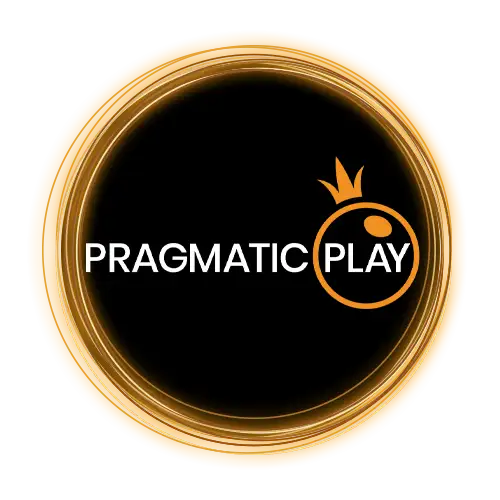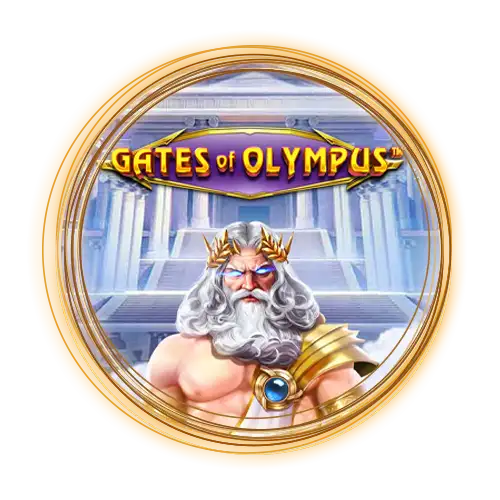

สล็อต777 เว็บตรง ไม่ผ่านเอเย่นต์ แตกง่าย ฝาก-ถอนไวด้วยระบบ Auto
สล็อต777 เว็บตรง ไม่ผ่านเอเย่นต์ เป็นที่ต้องการสำหรับนักปั่นสล็อตในยุคนี้เป็นอย่างมาก ซึ่งเป็นเว็บที่เล่นกับค่ายเกมยักษ์ใหญ่จากต่างประเทศ ที่มีเกมมากกว่า 1,000 เกม ทำให้สามารถเลือกเล่นเกมที่มีโอกาสแตกสูงได้มากกว่าที่อื่น ทำให้เพิ่มโอกาสในการทำกำไรจากเกมสล็อตได้โดยไม่ต้องผ่านเอเย่นต์ ซึ่งอาจมีความเสี่ยงในการฝากถอนเงิน ทำให้ผู้เล่นมั่นใจในความปลอดภัยและความโปร่งใสทุกการเดิมพัน สล็อต 777 เว็บตรง ยังเน้นให้บริการด้วยความรวดเร็ว กับเกมที่มีความคุณภาพสูง โดยเฉพาะในเรื่องของการฝาก-ถอนเงินที่ใช้ระบบออโต้ ทำให้การทำธุรกรรมเป็นเรื่องที่สะดวกและสบายสำหรับผู้เข้าเล่นทุกคน คุณสามารถฝากถอนเงินได้อย่างง่ายดายโดยไม่ต้องรอแอดมิน ในการอนุมัติ ไม่ว่าคุณจะเป็นผู้เล่นมือใหม่หรือมืออาชีพ จะทำให้คุณไม่ผิดหวัง ลองสมัครสมาชิก สล็อต 777 วันนี้เริ่มต้นผจญภัยกับโลกสล็อตที่น่าตื่นเต้น
สล็อต777 คืออะไร แตกต่างกับเว็บทั่วไปอย่างไรบ้าง?
เหตุผลที่ควรเลือก สล็อต 777 เว็บตรง ไม่ผ่านเอเย่นต์

หากคุณสนใจในเกมสล็อตออนไลน์ คุณไม่ควรพลาด สล็อต 777 เว็บตรงไม่ผ่านเอเย่นต์ เราพร้อมที่จะบริการและดูแลลูกค้าทุกระดับโดยไม่แบ่งชนชั้น เราให้บริการลูกค้าที่เป็นมิตรมาโดยตลอด และไม่มีประวัติการโกงลูกค้า เราเปิดเว็บมาด้วยความยุติธรรมและนำเข้าเกมโดยถูกลิขสิทธิ์ ทำให้เกมมีความน่าเล่น ปลอดภัย และโอกาสชนะรางวัลที่เป็นกลาง จึงทำให้ผู้เล่นมั่นใจและเข้าเล่นไม่ต่ำกว่าวันละ 100,000 คน จึงนับได้ว่าเว็บ 777สล็อต เป็นเว็บตรงที่ใหญ่ที่สุดในไทย และมีเหตุผลอีกมากมายที่คุณควรเลือกเล่นกับ สล็อตเว็บตรง 777

1. เว็บตรงน่าเชื่อถือและปลอดภัย
สล็อต777 เป็นเว็บที่ได้รับการรับรองและมีใบอนุญาตถูกต้องจากหน่วยงานต่างประเทศ ทำให้ผู้เล่นวางใจได้ในเรื่องของความปลอดภัย แตกต่างจากเว็บสล็อตทั่วไปที่อาจไม่มีใบอนุญาตหรือมีความเสี่ยงที่จะโกงผู้เล่น สล็อต777 ใช้ระบบรักษาความปลอดภัยขั้นสูง เช่น การเข้ารหัส SSL เพื่อปกป้องข้อมูลส่วนตัวของสมาชิก
2. มีธีมเกมให้เลือกไม่ซ้ำ
เว็บสล็อตทั่วไปมักจะมีจำนวนเกมให้เลือกเล่นจำกัด และอาจมีเฉพาะเกมที่ได้รับความนิยมเท่านั้น แต่สล็อต777 ได้นำเกมสล็อตจากค่ายเกมชั้นนำหลากหลายค่าย เช่น PG Slot, Joker Gaming, Pragmatic Play และอื่น ๆ ที่มีเกมให้เลือกเล่นมากกว่าหลายร้อยเกม ซึ่งช่วยให้ผู้เล่นสามารถสนุกไปกับเกมที่แตกต่างกันได้โดยไม่มีเบื่อ
3. ระบบจัดการ การฝาก-ถอนที่รวดเร็ว
หนึ่งในจุดเด่นของสล็อต777 คือระบบฝาก-ถอนที่รวดเร็วและสะดวกสบาย รองรับหลายช่องทางทั้งผ่านธนาคารในประเทศและทรูวอเลท โดยใช้ระบบอัตโนมัติที่ช่วยให้ธุรกรรมเสร็จสิ้นภายในไม่กี่วินาที ในขณะที่เว็บสล็อตทั่วไปบางแห่งอาจใช้เวลานานกว่าหรือมีเงื่อนไขที่ยุ่งยากในการถอนเงิน
4. บริการลูกค้า 24 ชั่วโมง
สล็อต777 มีแอดมินคอยดูแลลูกค้าตลอด 24 ชั่วโมง ซึ่งสามารถติดต่อได้ผ่านช่องทางหลักผ่านไลน์ ที่นิยมใช้กันในไทย เพื่อช่วยแก้ไขปัญหาหรือตอบข้อสงสัยของผู้เล่น ในขณะที่เว็บสล็อตทั่วไปบางแห่งอาจไม่มีการบริการที่ครอบคลุมเช่นนี้ ทำให้ลูกค้าไม่สามารถทำการใดๆได้
สล็อตเว็บตรง 777 เว็บเกมสล็อตบนมือถือ มาใหม่ 2025
หากคุณสนใจ สล็อต777วอลเล็ต เป็นเว็บเกมบนมือถือที่นำเกมเข้ามาใหม่ในปี 2025 ซึ่งนำเกมมาให้คุณได้เล่นก่อนใคร ทำให้ผู้เล่นสามารถทดลองเล่นและทำกำไรได้ก่อนเว็บอื่น หากคุณกำลังมองหาเว็บสล็อตที่ตอบโจทย์ทั้งในด้านความสะดวกและการออกรางวัลที่เป็นกลาง สล็อตเว็บตรง777 คือตัวเลือกที่คุณไม่ควรพลาด ให้คุณมาลองสัมผัสกับประสบการณ์ที่ดีที่สุดในไทยตอนนี้ ไม่ว่าคุณจะเป็นผู้เล่นใหม่หรือผู้เล่นมืออาชีพ เหมาะที่จะทำกำไรกับเว็บตรง โดยเราให้ค่า RTP ที่สูงกว่าเว็บอื่นแน่นอน ทำให้คุณเล่นเบทที่ต่ำก็สามารถได้รับเงินรางวัลตอบแทนที่สูงอย่างแน่นอน อย่าพลาดที่จะเล่นเกมที่อัพเดทใหม่ 2025 นี้
สล็อต 777 เว็บตรง วอเลท ฝาก-ถอนไว ไม่เกิน 1 นาที

ถ้าคุณเป็นนักปั่นสล็อต คงรู้ดีอยู่แล้วว่าระบบฝากถอนนั้นสำคัญเป็นอย่างมาก ซึ่งทาง สล็อต 777 เว็บตรง ได้มีระบบฝากถอน ทรูวอเลท ที่รวดเร็วไม่ถึง 1 นาที ทำให้ฝากและการถอนเป็นเรื่องที่ง่าย การเลือกเล่นกับเว็บที่มีคุณภาพจึงเป็นสิ่งสำคัญ ทำให้คุณสามารถเล่นได้อย่างสบายใจ โดยไม่ต้องกังวลในการฝาก-ถอน เนื่องจากทางเรามีระบบออโต้ และฝากผ่าน สล็อต 777 เว็บตรง วอเลท ทำให้คุณสามารถเลือกได้ว่าจะทำธุรกรรมผ่านช่องทางไหน ซึ่งการทำธุรกรรมที่หลากหลายเป็นสิ่งที่ผู้เล่นส่วนใหญ่ต้องการอย่างมาก โดยเฉพาะผ่านทรูวอเลท ที่มีความปลอดภัยและรวดเร็ว แถมยังไม่ต้องใช้บัญชีธนาคารเพื่อความปลอดภัย ทำให้ผู้เล่นส่วนใหญ่ต้องการฝากถอน สล็อต ฝาก-ถอน true wallet ไม่มี บัญชีธนาคาร 777 โดยวิธีนี้
ทางเข้าเล่น สล็อต777วอเลท เว็บตรงไม่ผ่านเอเย่นต์ ไม่มีขั้นต่ำ
สล็อต777วอเลท เป็นเว็บตรงไม่ผ่านเอเย่นต์ ที่นำรูปแบบการเล่นสล็อตจากคาสิโนมาเปิดด้วยระบบออนไลน์ ที่มีการเล่นไม่ซับซ้อน ทำให้ผู้เล่นสามารถเข้าถึงง่ายมือใหม่ก็สามารถเล่นได้ อีกทั้งยังปลอดภัยและมีใบรับประกันในการเปิดในไทย ซึ่งสิ่งสำคัญของ สล็อต777 slotวอลเล็ต คือระบบฝากถอนด้วยทรูวอเลท ที่ไม่มีขั้นต่ำสามารถฝากเท่าไหร่ก็ได้หรือกี่ครั้งก็ได้ไม่จำกัด และไม่มีค่าธรรมเนียม คุณสามารถเริ่มเล่นได้อย่างง่ายดายไม่ว่าคุณจะเคยเล่นหรือไม่ นอกจากนี้การเลือกเล่นสำหรับเว็บตรงยังช่วยให้คุณได้รับประสบการณ์ที่ไม่เหมือนใคร โดยเราจะอัพเดทเกมที่ทางค่ายสล็อต ได้พัฒนาขึ้นมาใหม่ให้คุณได้เริ่มก่อนใคร ซึ่ง สล็อต777วอเลท อาจเป็นคำตอบที่คุณกำลังมองหา อย่าพลาดที่จะเข้าเล่นเกมสล็อตที่ดีที่สุดในไทย
6 ค่ายเกมดังบนเว็บ สล็อต777 ตอบโจทย์สายปั่นสล็อต


PG Slot
PG Soft หรือรู้จักในชื่อของ pg slot เป็นค่ายเกมที่นิยมที่สุดในวงการเกมสล็อตออนไลน์ ด้วยชื่อเสียงที่เป็นค่ายเกมยักษ์ใหญ่ระดับโลก สล็อต777 pg ติดอันดับท็อปมาอย่างยาวนาน ทำให้การเล่นเกมสล็อตเต็มไปด้วยประสบการณ์ใหม่ๆ โดยมีเกมให้เลือกเล่นมากกว่า 1,000 เกม โดยแนวเกมเหมาะสำหรับผู้เล่นทุกคนเพราะมีการเล่นที่ง่ายและมีวิธีเล่นที่ไม่ซับซ้อน

SLOTXO
สล็อต XO เป็นค่ายเกมที่เน้นสร้างเกมสล็อตให้กับชาวเอเชีย โดยเฉพาะธีมเกมที่เป็นแนวโบราณและสัตว์ในตำนาน จึงเป็นเกมที่นิยมเล่นในหมู่ของนักสล็อตที่ต้องการธีมแบบประวัติศาสตร์ ทำให้มีความสนุกและตื่นเต้นพร้อมทำเงินได้อย่างมหาศาล ซึ่งแนวเกมของค่ายนี้จะไม่ซ้ำใครอย่างแน่นอน ทำให้คุณไม่เบื่อในการเล่นเกมสล็อต

JILI
JILI slot เป็นค่ายเกมที่มีชื่อเสียงมากในต่างประเทศ ซึ่งนักปั่นในไทยกำลังตามหาค่ายเกมนี้ เนื่องจากมีการออกรางวัลที่หลากหลายและสูงเป็นอย่างมาก จึงทำให้นักปั่นสล็อตในไทยต้องการเล่นเกมจากค่ายนี้ โดยส่วนมากจะมีเพียงสล็อตเว็บตรง ที่จะนำเข้าค่ายเกม JILI มาให้คุณได้เล่นเท่านั้น เพราะต้องนำ API แท้มาเปิด

918 Kiss
198 Kiss เป็นค่ายเกมสล็อตที่มีประวัติมาอย่างยาวนาน ในวงการเกมคาสิโนออนไลน์ ด้วยประสบการณ์การพัฒนาเกมที่ยาวนาน ทำให้ค่ายเกมนี้มีกราฟิกที่สวยงามและระบบที่รวดเร็ว จึงทำให้ผู้เข้าเล่นค่ายเกมนี้สามารถเล่นเกมได้โดยไม่กระตุก ทำให้คนที่เน็ตช้าก็ยังสามารถเล่นเกมจากค่ายนี้ได้แบบไหลลื่น

Joker Gaming
ค่ายเกมสล็อต Joker Gaming มีชื่อเสียงในวงการ joker สล็อต 777 เว็บตรง จุดเด่นของค่ายนี้คือเกมที่เล่นได้และเหมาะสำหรับผู้เล่นมือใหม่ สามารถผลิตเกมที่มีความนิยมสูงในหมู่ปั่นออกมาได้หลายเกม ซึ่งเกมเหล่านั้นสามารถทำเงินได้เป็นจำนวนมาก มียอดถอนอย่างมหาศาล เหมาะที่จะทำงานสำหรับนักปั่นสำหรับยุคปัจจุบัน

Pragmatic Play
Pragmatic Play เป็นอีกหนึ่งค่ายเกมที่สายปั่นสล็อตต้องรู้จัก ด้วยฟีเจอร์และโบนัสที่น่าสนใจ จึงทำให้ค่า RTP ของเกมจากค่ายนี้สูงมาก อีกทั้งยังมีแนวเกมที่น่ารักและแฟนตาซี ทำให้เล่นได้ไม่รู้สึกเบื่อ และยังเป็นค่ายเกมสล็อตระดับท็อปที่ติด 1 ใน 3 ของค่ายเกมดังในไทยมาโดยตลอด ผู้เล่นสล็อตไม่ควรพลาดเป็นอย่างมาก
สล็อต777เว็บตรง คัดเกมแตกหนัก RTP สูง มือใหม่ก็เล่นได้

เมื่อพูดถึงการเล่นสล็อตออนไลน์ หลายคนคงนึกถึงเว็บสล็อตที่มีชื่อเสียงและมีความน่าเชื่อถือ สล็อต วอเลท777 เป็นหนึ่งในนั้นที่ได้รับความนิยมอย่างแพร่หลาย ด้วยการคัดสรรเกมคุณภาพสูง และมี RTP ที่สูง ซึ่งเป็นตัวชี้วัดว่าเกมมีโอกาสในการคืนเงินให้ผู้เล่นมากน้อยแค่ไหน เกมที่มี RTP สูงจะมีโอกาสชนะมากกว่า สล็อต777เว็บตรง คัดเลือกแต่เกมที่มี RTP สูงกว่า 95% ทำให้ผู้เล่นมีโอกาสได้รับรางวัลใหญ่มากขึ้น ทำให้ผู้เล่นมั่นใจได้ว่าโอกาสในการชนะและการได้รับรางวัลจากเกมนี้มีมากกว่าเว็บสล็อตทั่วไป อีกทั้งยังเหมาะสำหรับมือใหม่ที่เพิ่งเริ่มต้นเข้าสู่วงการสล็อตออนไลน์
เว็บ สล็อต777 นำเข้า API แท้ 100% ไม่ผ่านเอเย่นต์
การเลือกเกมสล็อตที่มาพร้อมกับ API แท้ 100% มีความสำคัญมาก เนื่องจาก API เป็นเทคโนโลยีที่ช่วยให้ระบบสามารถเชื่อมต่อกับเซิร์ฟเวอร์ของผู้ให้บริการโดยตรง ซึ่งหมายความว่าผู้เล่นจะได้เล่นเกมสล็อตกับเจ้าของค่ายเกม ไม่ว่าจะเป็นภาพ เสีย หรือระบบสูงออกผลลัพธ์ ที่เป็นธรรมและโปร่งใส ดังนั้นทาง สล็อต 777 จึงนำเข้า API แท้ 100% และไม่ผ่านเย่นต์ มาเปิดบริการในไทยให้ผู้เล่นได้เล่นอย่างคุ้มค่า ถ้าหากคุณกำลังมองหาเว็บสล็อตที่ตอบโจทย์ ทาง เว็บ777สล็อต คือคำตอบของคุณอย่างแน่นอน และเราได้นำ 6 เกมแตกง่ายมารีวิว

Fortune Rabbit
Fortune Rabbit เป็นเกมสล็อตธีมกระต่ายนำโชคที่ได้รับแรงบันดาลใจจากวัฒนธรรมจีน โดยกระต่ายถือเป็นสัญลักษณ์ของความมั่งคั่งและโชคลาภ เกมนี้ออกแบบมาในสไตล์สดใส น่ารัก พร้อมดนตรีประกอบที่ชวนให้ผู้เล่นรู้สึกผ่อนคลาย

Super Golf Drive
Super Golf Drive นำพาผู้เล่นเข้าสู่โลกของการแข่งขันกอล์ฟที่หรูหรา ตัวเกมมีธีมสปอร์ตที่เน้นความหรูหราและความสำเร็จ ผสมผสานกับกราฟิกที่คมชัดและสมจริง มี 5 วงล้อและ 4 แถว พร้อมเพย์ไลน์มากกว่า 50 ไลน์

Gates of Olympus
เกมสล็อต Gates of Olympus เป็นเกมที่ได้รับแรงบันดาลใจจากเทพปกรณัมกรีก โดยมีซุส เทพเจ้าแห่งสายฟ้าเป็นตัวเอก ตัวเกมมีกราฟิกที่สวยงามและเอฟเฟกต์ที่ดึงดูดสายตา RTP สูงถึง 96.7% และมีความผันผวนสูง

Asgardian Rising
Asgardian Rising เป็นเกมสล็อตธีมนอร์สที่นำเสนอเรื่องราวของนักรบไวกิ้งและการต่อสู้ในดินแดนแอสการ์ด ตัวเกมมาพร้อมกับกราฟิกที่โดดเด่นและเสียงประกอบที่เข้มข้น RTP อยู่ที่ 96.2% และมีความผันผวนปานกลางถึงสูง

Shark Bounty
Shark Bounty เป็นเกมสล็อตที่มาพร้อมธีมการผจญภัยใต้ท้องทะเลลึก ผู้เล่นจะได้พบกับฉลามและสัตว์ทะเลต่างๆ รวมถึงขุมทรัพย์ที่ซ่อนอยู่ มีฟีเจอร์ Treasure Chest Bonus ที่ช่วยเพิ่มรางวัล และฟีเจอร์ฟรีสปินพร้อมตัวคูณที่เพิ่มขึ้นในทุกการชนะ

Three Crazy Piggies
Three Crazy Piggies เป็นเกมสล็อตที่ดัดแปลงมาจากนิทานเรื่องหมูน้อยสามตัว เกมนี้ออกแบบมาในสไตล์การ์ตูนที่สดใสและเต็มไปด้วยความสนุกสนาน สัญลักษณ์ Wild สามารถแทนที่สัญลักษณ์อื่นเพื่อเพิ่มโอกาสชนะ
สมัครฟรี รวมพนันออนไลน์ที่ สล็อต 777 เหมือนเล่นในคาสิโน
สมัครเล่นฟรีกับเว็บ สล็อต 777 เว็บตรง ไม่ผ่านเอเย่นต์ ไม่มี ขั้นต่ํา เว็บพนันที่ครบวงจรที่สุดที่มีเกมให้เลือกมากมายเสมือนอยู่ในคาสิโนจริง โดยจะมีทั้งเกมสล็อต บาคาร่า ฟุตบอล หวย และอื่นๆอีกมากมาย ให้ได้ร่วมสนุกและเดิมพัน พร้อมระบบฝากถอนที่เป็นแบบอัตโนมัติรวดเร็วปลอดภัย อีกทั้งยังสมัครฟรีไม่มีค่าใช้จ่ายถ้าหากคุณเบื่อกับการเล่นเกมซ้ำๆ เราขอแนะนำ สล็อตเว็บตรง 777 เป็นทางเลือกที่คุณไม่ควรพลาด สามารถสมัครได้แล้ววันนี้ พร้อมโปรโมชั่นที่มากมายมาเสิฟให้คุณถึงที่
สล็อตเว็บตรง 777 มีใบเซอร์รับรอง ได้มาตรฐานสากล 2025
สล็อต เว็บตรง 777 นำเข้าแบบถูกลิขสิทธิ์ มีใบเซอร์รับรองได้มาตรฐานระดับสากล ซึ่งตรวจสอบจากหน่วยงานที่เกี่ยวข้องจากต่างประเทศ ในปี 2025 นี้ไม่มีเว็บไหนที่จะปลอดภัยและถ้าเชื่อถือเท่ากับ สล็อต777เว็บตรง อีกแล้ว เราได้ทำตามมาตรฐานและระบบที่พัฒนามาร่วม 10 ปี เพื่อมาเปิดให้บริการให้ลูกค้าได้รับคุณภาพเว็บที่ดีที่สุด และสามารถสร้างกำไรจากเว็บตรงที่ได้คุณภาพ มีการรีวิวจากผู้เล่นมากมายว่าเป็นเว็บที่แจกหนักแจกจริง สามารถถอนได้ไม่อั้น ไม่มีการหักค่าคอม
FAQ คำถามที่พบบ่อย
สล็อต777 นำเกมเข้าถูกลิขสิทธิ์ จริงไหม?
ตอบ: นำเข้าแบบถูกลิขสิทธิ์จริงเนื่องจากเราได้ซื้อ API จากค่ายเกมชื่อดังฉันดังระดับโลกมาเปิดให้บริการในไทยโดยไม่มีการปรับตัวเกมจึงทำให้เกมมีการออกรางวัลที่เป็นกลาง
สล็อต 777 จำกัดยอดถอนรายวันไหม ?
ตอบ: ไม่จำกัดการถอนเนื่องจากเว็บสล็อต 777 เป็นการเงินฝากถอนไม่มีขั้นต่ำสามารถถอนหรือฝากกี่บาทก็ได้และสามารถทำรายการกี่ครั้งก็ได้ใน 1 วันไม่มีการหักค่าธรรมเนียมใดๆ
สล็อต 777 เว็บตรง ฝากถอน วอเลท ได้ไหม?
ตอบ: หากต้องการฝากผ่าน True wallet สามารถทำได้ซึ่งเว็บของเรารองรับการฝากผ่าน ทรูวอเลท แต่ยังไม่รองรับการถอดผ่านทรูวอเลท ลูกค้าต้องทำการถอดผ่านบัญชีธนาคารเท่านั้น
